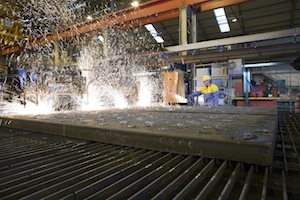Travel blog: A small phoenix rises over the Black Country
 “Things aren’t like they used to be” is a refrain which dates back to at least Ancient Greek times, when Aristotle complained of declining standards among the youth of the day. And while many a taxi driver considers himself a philosopher, for Mr Singh, who was driving me through Wolverhampton, the link was probably unintentional as he described how the UK’s “Black Country” had declined over the course of his lifetime. He was talking less of the local youth (I think) than the gradual loss of the churning activity which once defined Wolverhampton as a great industrial city.
“Things aren’t like they used to be” is a refrain which dates back to at least Ancient Greek times, when Aristotle complained of declining standards among the youth of the day. And while many a taxi driver considers himself a philosopher, for Mr Singh, who was driving me through Wolverhampton, the link was probably unintentional as he described how the UK’s “Black Country” had declined over the course of his lifetime. He was talking less of the local youth (I think) than the gradual loss of the churning activity which once defined Wolverhampton as a great industrial city.
And yet local politicians will take heart – no doubt Messrs Cameron and Osborne too – from a small revival now taking place as the result of recent investment by a modern industrial giant: Tata Steel. The company has poured £15m into its 20-hectare processing complex at Steelpark, which consists of an automotive service centre, an upcoming light gauge facility and a £3.1m profiling centre. The latter, which opened earlier this month, has doubled Tata’s manufacturing footprint to 16,125m2 from the space previously available at two separate sites in the West Midlands.
In fact, this development has occurred under the shadow of a nationwide consolidation strategy which means the end for the company’s Cradley and Wombourne facilities – although all personnel who wished to transfer to Steelpark have been able to do so, according to Mick Horan, Tata’s director of heavy gauge decoiling and plate profiling, UK and Ireland. There are now 565 workers at Steelpark, 36 of them qualified engineers.
So that’s the men; what of the machines? As the development of the new centre is ongoing, Tata has further equipment to install by March before it reaches full production of 47kt per annum (up from 32kt) this autumn. Most of the gear is being relocated, but two each of the plasma machines and machining centres are new. Horan seems especially enamoured of the plasma machines, which are controlled by Hypertherm EDGE Pro software and offer a significant efficiency upgrade. Meanwhile, the MCV 2100 finishing machine combines three processes into one.
As I walked around the new profiling centre with Horan, I noted how few workers there actually were in the building: usually a lone individual tending to the needs of each machine. Although the centre is not yet finished, one or two workers per machine is the expected complement.
If there is a phoenix rising from the ashes of Wolverhampton’s once-great industry, that phoenix is a machine (an automated one).


